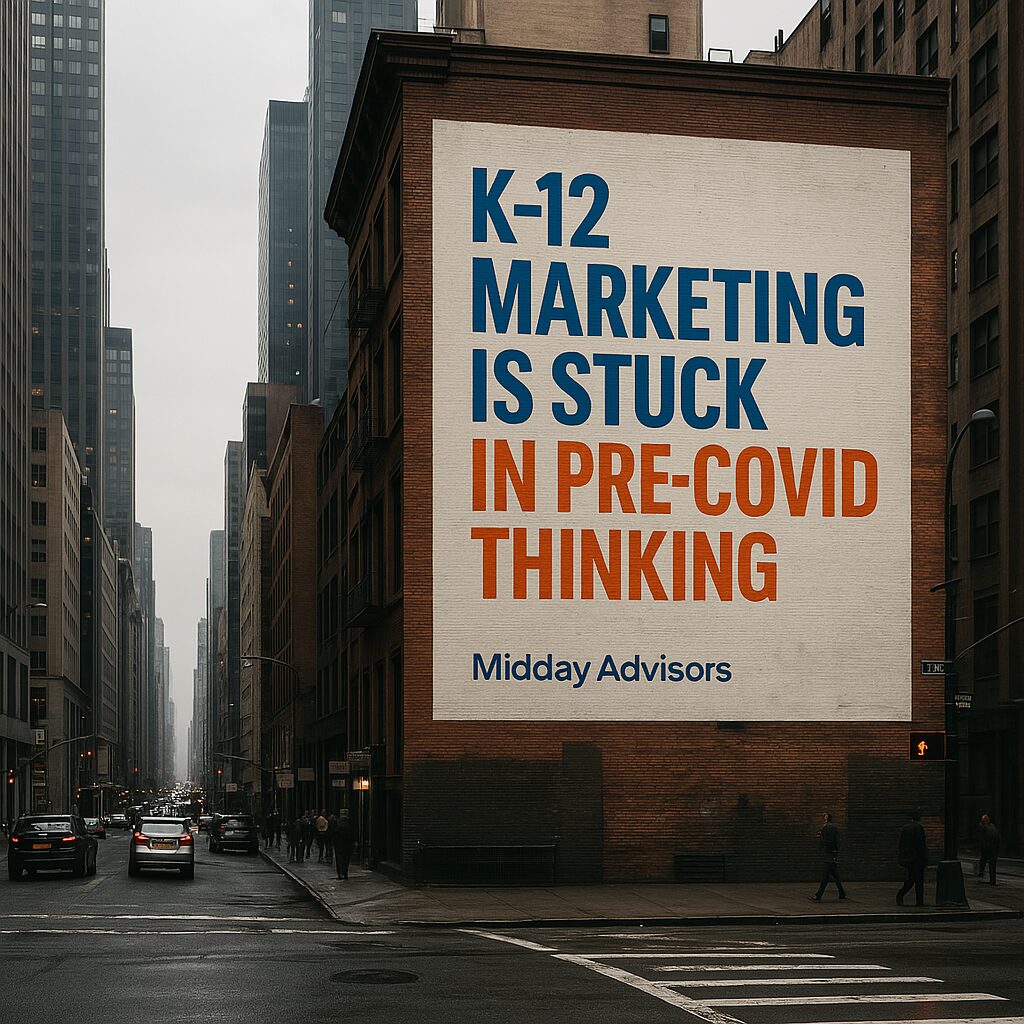Amidst the intricate realm of commerce, where every maneuver holds significance and rivalry is fierce, the harmonious amalgamation of sales and marketing emerges as a fundamental cornerstone for triumph. It’s a tale as ancient as time itself, a narrative featuring two divisions that often resemble star-crossed companions, destined for discord. However, when these two entities unite, enchantment transpires. Within this composition, we embark on an expedition to decipher why the alignment of sales and marketing is not merely important but imperative for the prosperity of enterprises. We’ll also investigate the tactics that can bridge the divergence between these two divisions.
The Disconnect: A Common Tale
Visualize a scenario where a corporation’s marketing unit ardently promotes a fresh product, spawning a deluge of potential leads, while the sales unit grapples to conclude transactions. This exemplifies a timeless predicament, the disconnection frequently witnessed between sales and marketing divisions. They toil diligently in parallel, yet their paths seldom converge.
The Importance of Alignment
Why is this detachment a source of apprehension? To initiate, it’s a costly circumstance. Misaligned sales and marketing units lead to squandered resources and inefficacies. However, the genuine impact extends beyond the financial records. It affects the very essence of a company’s being – its clientele. When sales and marketing are not singing from the same hymn sheet, customers endure a disjointed expedition. They encounter a mixture of messages, face inconsistencies, and often end up disheartened.
The Power of a Unified Front
Now, envisage an alternative scenario. Marketing and sales units function in perfect concord, akin to a symphony orchestra. Marketing generates leads of superior quality that resonate with the target audience of the sales team. Sales, armed with this invaluable intelligence, engages with these leads, knowing precisely how to address their requirements and predicaments. The outcome? A more streamlined sales procedure, amplified conversion rates, and contented customers.
The Benefits of Sales and Marketing Alignment
Improved Communication and Collaboration
When sales and marketing teams align, communication barriers break down. They collaborate seamlessly, sharing insights and feedback. Marketing understands the real-world challenges faced by sales, while sales appreciates the effort put into lead generation. This open dialogue fosters a culture of continuous improvement.
Enhanced Customer Experience
In the age of customer-centricity, delivering a consistent and exceptional customer experience is paramount. Alignment ensures that customers receive a cohesive message and seamless interactions at every touchpoint. This consistency builds trust and loyalty.
Increased Revenue and Growth Opportunities
The ultimate goal of any business is to drive revenue and grow. When sales and marketing align their efforts, they become a formidable force. Marketing can tailor its campaigns based on sales feedback, resulting in more effective lead generation and conversion. This synergy leads to revenue growth.
Strategies for Achieving Alignment
Now that we’ve established the importance of alignment, let’s explore some strategies to make it a reality:
Establish Shared Goals and Metrics
Alignment between sales and marketing commences with a shared purpose and shared objectives. This unified trajectory ensures both units are on the same page, striving to accomplish specific Key Performance Indicators (KPIs). These KPIs serve as guiding beacons, establishing explicit, quantifiable objectives on which both units concentrate. For instance, a shared KPI could be to amplify customer engagement by 20% within the subsequent quarter. When everyone is aligned toward accomplishing these objectives, a sense of unity and mutual comprehension naturally ensues. Sales and marketing value each other’s roles and contributions, culminating in a harmonious and effective working relationship. It’s akin to a well-coordinated dance where every move is synchronized, culminating in a triumphant performance—the realization of defined KPIs.
In this orchestrated collaboration, sales and marketing transmute into diverse sections of an orchestra, each with its role and sheet music symbolized by the KPIs. The conductor, symbolizing the shared purpose, guides them to perform in harmony. Just like in a symphony, when every instrument plays its part in sync, the result is a beautiful, unified piece that resonates with the audience—your customers. Similarly, when sales and marketing units operate harmoniously towards shared objectives, the result is a seamless and impactful customer experience, culminating in business triumph.
Encourage Regular Communication and Feedback
Effective alignment hinges on perpetual and open communication. Routine meetings, feedback sessions, and collaborative brainstorming are vital in bridging the gap between sales and marketing. Maintaining a transparent conduit for sharing insights and challenges is imperative. These sessions act as the adhesive, guaranteeing both units stay attuned, comprehend each other’s progress, and collectively work towards shared objectives. Just like good communication underpins any prosperous relationship, it constitutes the cornerstone of a successful alignment between sales and marketing, paving the way for collaboration and success.
Utilize Technology and Data Analytics
In today’s fast-paced digital landscape, data reigns supreme, and leveraging it intelligently can make all the difference. For both sales and marketing teams, harnessing the power of technology and data analytics is akin to wielding a potent toolset. Through advanced analytical tools, they can dive deep into customer behaviors, preferences, and market trends. This treasure trove of data provides invaluable insights, enabling informed decision-making at every turn. Marketing can optimize campaigns based on data-driven insights, ensuring they resonate with the target audience. Simultaneously, the sales team can use these insights to tailor their approach, focusing on prospects most likely to convert. In essence, data analytics acts as a compass, guiding both teams towards the common north of success.
In this data-driven era, the role of technology cannot be overstated. It acts as the bridge connecting sales and marketing. Advanced Customer Relationship Management (CRM) systems, like Hubspot or Salesforce, and sophisticated analytics tools amalgamate data from various touchpoints. This integration enables both teams to work off the same page, with real-time information at their fingertips. Marketing can align their strategies based on sales feedback, ensuring leads are nurtured effectively. On the other side, sales can understand the intricacies of marketing efforts, leading to a symbiotic relationship. Technology not only streamlines processes but also fosters a culture of collaboration, laying the foundation for successful alignment between sales and marketing.
Organize Joint Training Sessions
Bridging the understanding gap between sales and marketing commences with shedding light on the complexities of each other’s roles. It’s akin to comprehending the moves in a partner dance; each step is crucial for the harmony of the performance. Educating both units about the functions, challenges, and responsibilities of the other aids in building a foundation of empathy and mutual respect. Sales, for instance, gain an appreciation for the effort marketing expends on lead generation and brand positioning. Conversely, marketing comprehends the pressures faced by sales to meet targets and transmute those leads into sales. This newfound understanding serves as a catalyst, nurturing a sense of unity and collaboration.
One effective method to facilitate this understanding is through joint training sessions. These sessions can be likened to a rehearsal before a grand spectacle, where both units assemble to grasp the script—the overarching organizational objectives. These sessions provide a platform to converse and address the challenges encountered by each division. When everyone comprehends the limitations and opportunities the other confronts, it becomes more straightforward to collaborate toward surmounting challenges and capitalizing on opportunities. It’s akin to discovering the rhythm in a song; once everyone is in sync, the melody is more harmonious and pleasing. Joint training sessions not only enhance the performance of individual divisions but contribute to the successful alignment of the organization as a whole.
Create a Unified Customer Journey
Crafting a seamless customer journey is akin to designing a scenic route for a journey. It’s not just about reaching the destination, but about the experience throughout the expedition. When sales and marketing come together to map out this expedition, magic happens. The customer journey should be a well-thought-out narrative, with sales and marketing touchpoints serving as essential plot points. These touchpoints should be strategically placed to guide the customer smoothly through their expedition. Often this journey is mapped out in a Sales Playbook.
Furthermore, this journey should be a symphony, with both departments playing their instruments in harmony. Sales and marketing should collaborate to ensure that each touchpoint resonates with the customer. It’s about providing solutions to their pain points and addressing their needs at every turn of the journey. Whether it’s a marketing email that catches their interest or a personalized sales call that seals the deal, every interaction should be a delightful note in this symphony. When both departments work in unison, curating this extraordinary journey, customers not only arrive at their destination (the purchase) but revel in the entire expedition, creating a positive, lasting impression.
Overcoming Challenges in Alignment
While the benefits of alignment are undeniable, challenges do exist:
Differing Objectives
Sales and marketing, like parallel tracks, can sometimes seem to be heading in different directions. Sales focuses on the immediate, aiming for tangible revenue, while marketing takes a broader view, concentrating on building brand recognition and loyalty. However, the true synergy arises when both departments find common ground, setting shared goals that blend their respective objectives, ultimately propelling the organization forward.
Communication Issues
Communication is the linchpin that holds the structure of alignment intact. Just like a sturdy rope bridge, it ensures safe passage between sales and marketing. It’s crucial for both teams to invest in open and efficient communication channels, acting as strong ropes, preventing any crucial information from slipping through the cracks and hindering the journey toward alignment.
Conflicting Performance Metrics
In the landscape of metrics, sales and marketing often speak different dialects. Sales echo the revenue tune while marketing hums the lead quality melody. To compose a symphony, aligning these metrics into a harmonious tune is imperative. Emphasizing the metrics that resonate with both departments ensures a melodious collaboration, playing to the tune of collective success.
Lack of Shared Understanding
To bridge this divide, companies should invest in cross-training initiatives. It’s akin to learning each other’s dance steps; sales understanding marketing and vice versa. This mutual knowledge cultivates a culture of collaboration, where both teams are not only aware of but appreciate and complement each other’s moves, resulting in a seamless and coordinated performance on the business stage.
In Conclusion
In the grand narrative of business success, sales and marketing alignment is a pivotal chapter. The collaboration between these two departments is not a luxury but a necessity. It streamlines processes, enhances customer experiences, and maximizes revenue potential.
In the end, it’s about delivering a consistent and compelling message to potential customers. It’s about speaking to their needs and pain points throughout their journey with your brand. Sales and marketing alignment is the key to unlocking this potential, leading to a more cohesive and effective approach that ultimately drives growth and success.
So, as you embark on your business journey, remember the tale of alignment. It’s the story of unity, of two seemingly different departments coming together for a common cause – your company’s prosperity.
Sales and Marketing Alignment – Frequently Asked Questions
Q1. How can aligning sales and marketing benefit a small business?
Aligning sales and marketing for a small business can lead to increased efficiency, better resource utilization, and a more focused approach to reaching the target audience, ultimately resulting in higher conversions and growth.
Q2. Is it essential for both sales and marketing teams to use the same software?
While using the same software is beneficial, it’s more important for the teams to have a shared understanding of goals and metrics. However, integrating software can enhance efficiency and facilitate better collaboration.
Q3. What are some common challenges in aligning sales and marketing?
Common challenges include differences in objectives, lack of communication, conflicting performance metrics, and a lack of shared understanding of each other’s roles.
Q4. How can companies measure the success of sales and marketing alignment?
Measuring success can be done by analyzing key performance indicators (KPIs) such as increased revenue, higher lead quality, shorter sales cycles, and improved customer satisfaction.
Q5. Are there specialized tools to aid in sales and marketing alignment?
Yes, there are various Customer Relationship Management (CRM) systems and marketing automation tools designed to facilitate alignment by integrating and streamlining processes between the two teams.










